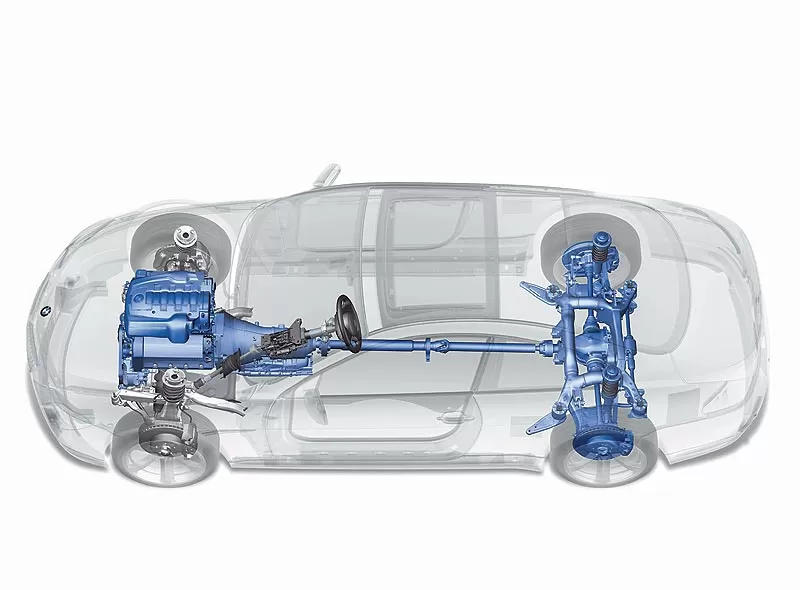
The James Bond experience with a head-up display!
Content
The Head Up Display (HUD) is a transparent display that displays data on a screen within the driver's line of sight. This type of display was originally invented for military use. Critical operational data has been displayed to fighter pilots this way for 25 years. In addition, in the late eighties, this innovative technology could be admired as an automotive application. In the James Bond movie Living Lights, the famous secret agent's Aston Martin adaptation is equipped with this feature.
A practical function for drivers too
When flying a fighter, fractions of seconds play a decisive role. At speeds of hundreds and thousands of km / h, the pilot's gaze must be directed outward at all times. There is nothing so dramatic about the car. However, displaying the most important operating data without having to look down at the dashboard is an attractive comfort and safety feature.

This cool and sporty gadget was designed especially for young dynamic drivers. However, older drivers who need multifocal glasses for clear vision are especially grateful. projection display . You never need to take your eyes off the road to always be aware of the most important driving data. However, the differences between individual devices and solutions are significant.
Cheap and Limited: Mobile App

Smartphone can be turned into a projection display . However, this requires more than just downloading the app. The real benefit of an interface is its transparency.
Therefore, a smartphone in your field of vision is unlikely to be an acceptable solution. . Retailers offer smartphone mounts to place a smartphone horizontally while its display is illuminated by a translucent reflective film. In daylight, the illumination power of the display is hardly sufficient to provide adequate vision.
In addition, the quality of the holders is often unsatisfactory. A wobbly, erratic display provides the opposite of the actual purpose of the HUD. Fortunately, adequate interfaces are now available that cost only slightly more than mediocre smartphone holders that cost about 300 dollars. €20 (± £18) .
Options are noticeably limited
Semi-professional HUD interfaces start at ca. €30 (± £27) . All of these upgrade solutions have one thing in common: they have a hard display . In the era of HD movies on a smartphone, this is somewhat curious. As for the display, you might feel like you've been catapulted back into an era of " Knight Riders » eighties.

However, this display format is ideal for its purpose: clear signals with sufficient legibility . The range of display possibilities is quite wide. The simplest HUDs only display speed, whether in large, legible numbers, depending on the model. For some users, this limited information is sufficient.

Speed warning is now a standard feature on many HUD interfaces.. A driver exceeding the local speed limit is alerted with a display of the allowed maximum speed. The range of possibilities is expanding: the odometer, fuel consumption and elementary navigation are available in full-fledged devices.
How does the HUD get data?

There are three ways to transfer data to the HUD:
- For the main HUD applications it's usually GPS . This technology is now remarkably accurate.
- The second option - cable connection with OBD . This plug is originally intended for reading out the fault memory. Home craftsmen and engineers are increasingly turning this service connection into a multifunctional data source. OBD signals have proven to be ideal for displaying HUDs. The advantage of a cable connection is a constant power supply to the device.
- However, not everyone likes the cable lying in the car. Therefore, head-up displays with Bluetooth reception. The only thing you need is a USB dongle to insert into the OBD.
Head-up display installation

The main task is retrofit car HUD .
Manufacturers offer kits consisting of translucent reflective foil, holder, HUD device and OBD connector.
At the very least, 12V plug power is included in most kits available.
The next generation is on its way
Next-generation HUD interfaces are already available in the US, making European solutions look old-fashioned.
NAVDY is a HUD with the full functionality of a smartphone: NAVDY integrates an LED display, gesture control, control via a mini-pad on the steering wheel. Phone calls and navigation are possible with this interface. NAVDY requires a Bluetooth connection to a smartphone.

Other Next Generation HUDs Have Similar Functions . The only downside to these very innovative interfaces is their price. Where the hard projection display stands approx. €30-50 (± £27-45) , HUD 2.0 easily worth ten times as much. However it is always cheaper than factory installed interfaces . They are optimally adapted to the vehicle and do not have an obstructing cable. However, they are so expensive that you may wonder if this is a reasonable option. Thus, the onboard HUD is likely to suffer the same fate as its predecessor, the navigation device. Anything that is offered as a mono-functional solution will soon become obsolete in the next generation.

